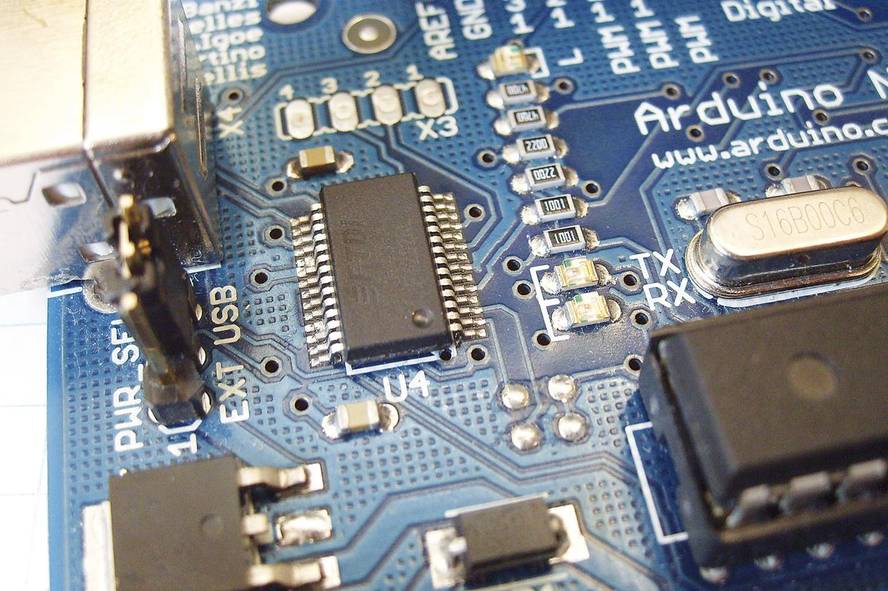Free hardware
Do you not have the feeling that electronic devices and others are increasingly closed and dark? The first devices (TVs, computers...) could open up, understand their functioning, repair and re-assemble, but today it is increasingly difficult. And not only because the appliances have gained in complexity, but the manufacturers have done it intentionally: they do not bring screws to open them and there is no choice but to break them; if opened the warranty is lost; all components are integrated into a plate... If a break occurs, even if it is of a small section, there is no choice but to take it to the store. There, those in the shop are often in the same state: they can only send them to the manufacturer or say it is better and cheaper to buy another. And this not only happens with laptops or tablet type electronic devices, but it is an increasingly common feeling in appliances or cars.
At the same time, more and more abuses are seen with patents and other systems of protection of intellectual property. At present, rather than protecting real inventions, large companies patented very diffuse concepts or pre-existing ideas to the detriment of new companies and progress.
All this takes away power, autonomy and savings to users and consumers, as well as small and other media. And the capacity and control are increasing for producers and large brands. We all stayed in his hands.
Via free software free hardware free
This phenomenon already occurred in the world of software, as we said in March 2012. In times when computers were only in universities and places like this one, the philosophy of hacker predominated and it was usual to share software openly. But from the 1980s onwards, the software became patentable and computers spread across homes. And from the time they became business opportunities, companies began to sell only the binary or compiled code of the software, distributing it with a license of use. These licenses allow us - and not anything else - to use the software, that is, we can use the software, but it is not ours and we can not modify, repair or improve it, not even for us. The same thing currently happens with the hardware, that is, with the devices.
But then came the free software movement, which in addition to running the software, claims the right to analyze, improve and even redistribute it. To do this it is necessary to have open the source code of the software. Following this philosophy, many people and companies have developed numerous programs. The Linux operating system was one of the pioneers and later numerous basic programs have been developed (Firefox browser, LibreOffice suite...). On desktop computers they do not have too much diffusion, but free software predominates in other areas such as supercomputers, web infrastructure, mobile phones, etc.
Now with the hardware a movement with the same philosophy has been created: the free hardware. In this movement, all the information about the hardware of the technological devices (plans, schemes, integrated circuit design, assembly instructions, etc.) and all the software are open and free. Thus, as with free software, these devices can be produced, sold, modified, improved and redistributed by any small company, promoting progress and avoiding monopolies. And users also have control over the devices, since with them we can do what we want: assemble, open, analyze, repair, improve...
Arduino to make our own electronic devices
Arduino is one of the world's best-known and best-known leaders of free hardware. Arduino is formed by a free hardware plate and a microcontroller, in addition to a development environment. It has several analog and digital inputs in which we can connect sensors or switches and several outputs to connect motors or actuators. All the ingredients are cheap and we can assemble a plate of Arduino, buying the ingredients and seeing the plans; or we can buy the already composed. In the end it is a small and cheap computer, but we can replace the usual inputs of the computers (keyboard, mouse...) or outputs (screen, printer...) by the sensors and motors we want.
In this way, connecting sensors, motors, etc. We need in the inputs and outputs and writing a program through the development environment, we can make the desired appliance, appliance or electronic device. This device, which is for specific needs so rare and which would not make any manufacturer, but which adapts perfectly to our needs, we can do it ourselves. If you want to take advantage of it, the Internet is full of plans, instructions and videos of the devices made by the public with Arduino, and on the website of Arduino there are a lot of people shared: a device to open the garage door with the mobile phone, a window locksmith so that there are no noise during the passage of the train, robots... There are thousands of crazy ideas, but they are what can be done with Arduino: a lighting device and shutter shutter when dark, a bathroom fan when the methane is detected.
Arduino is used in many schools to teach computer science and electronics, as well as prototyping in companies. There is also a documentary about Arduino (Arduino The Documentary).
Free all kinds of hardware
Arduino is a small programmable very basic plate that serves to make with it your own electronic device. But that demands daring and minimal knowledge of electronics and computer science. Very appropriate for the hacker we like to put our hands in the devices guts, but perhaps not so much for end users.
However, at present there is the possibility to find any type of device such as free hardware: computers (many and different types), tablets, smartphones, photo and video cameras, radios, computer components (CPUs, graphics cards...), 3D printers, robots, video consoles… and also cars!
Free hardware is very interesting for those who like to purchase and use devices and have control over them: disassemble, know how it works, repair... That is why it is very appropriate for education or for people in developing countries to have electronic devices. Although for the moment it is relatively recent, in the future we will hear a lot about free technology.







